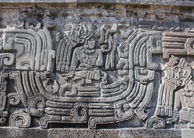Opinion:Was Adopting Agriculture Our Biggest Mistake? Challenging the Progressivist View of Human History
By
2011, Vol. 3 No. 06 | pg. 1/1
KEYWORDS:
“The Worst Mistake in the History of the Human Race” is the embodiment of anti-progressivist theory. Jared Diamond challenges the claim “that human history over the past million years has been a long tale of progress,” with a rebuttal suggesting that our "worst mistake" was transitioning from a hunter-gatherer lifestyle to one dominated by agriculture. Indeed, data collected from surviving hunter-gatherer populations shows “the average time devoted each week to obtaining food is only 12 to 19 hours for one group of Bushmen [and] 14 hours or less for the Hadza nomads of Tanzania,” while most of us suffer a 50-hour work week. Diamond synthesizes the progressivist view as a simple statement that “the lives of primitive people improved when they switched from gathering to farming,” and subsequently challenges this conclusion. To test Diamond's view, we can glean evidence from recent paleopathology experiments. Skeletons from Greece and Turkey, for example, showed a sharp decline in stature from periods of pre- and post-agriculture (as much as 6 inches from male specimens), with modern populations still yet to regain the height of their distant ancestors. The most persuasive experiment came from George Armelagos from the University of Michigan, where multiple forager population skeletons from Dickson Mounds (near Illinois River and Spoon River confluence) from pre- and post-domestication (maize, around AD1150) era pathologies. “Compared to the hunter-gatherers who preceded them, the farmers had a nearly 50 percent increase in enamel defects indicative of malnutrition, a fourfold increase in iron-deficiency anemia (evidenced by a bone condition called porotic hyperostosis), a threefold rise in bone lesions reflecting infectious disease in general, and an increase in degenerative conditions of the spine, probably reflecting a lot of hard physical labor.” Mark Cohen from the State University of New York further elaborates, stating that most populations wouldn't transition until absolutely necessary, when their numbers became too large to feed by any other process.According to Michael Chazan, there is no evidence of domestication of plants or animals (for Kebarans). However, although the Kebarans lived along a lakeside, with “access to a wide range of resources,” (p 208) a preference for certain plants and meat can be observed. It seems as if most preferred plants were wild grasses, as well as the usual amalgam of fruits and nuts. A preferred source of meat was gazelle (along with lesser resources, fish and bird included). If a site has evidence of preferred resources, this is generally a condition that may predate the domestication of the preferred resources. Chazan continues to explain that “most of the plant species do not show any evidence of having been domesticated,” (p 211). On the contrary, (not unlike the Kebarans), there is a preference for gazelle as the primary source of meat, up to “80%” at Abu Hureyra. At most (not all) Natufian sites, gazelle was the most preferred resource. Both of these cultures may not have been at that precise moment where population outgrew what foraging could provide, consequently domestication and agriculture were not yet adopted. Diamond continues to discuss the curses of agriculture, including epidemics brought about by crowding, social stratification (and with that, gender and race inequalities). It is an important as well as unavoidable question to ask: why were the majority of human populations transitioning to agriculture? Why, when “forced to choose between limiting population or trying to increase food production, we chose the latter and ended up with starvation, warfare, and tyranny.” Most foraging societies today are relatively small, groups of around 50. Agriculture, as stated by Cohen, was only accepted when it was an absolute must. Groups expanded, and with that, the need for more food was needed. Diamond challenged the mainstream progressivist position by stating that the transition may be the “worst mistake in human history.” Abrupt detrimental changes occur in anatomy (paleopathologies) especially, which contrasts in progressivist perspectives; these claims generally will state that all changes are advantageous. Although in the entire scope of human history, farming is beneficial, Diamond allows a much closer look at one point in time during this history, and allows the reader to extrapolate the heavy consequences of a time when agriculture was new, to modern day issues with civil unrest. With populations such as the !Kung as the focal point for many ethnographic studies, it becomes clear that despite the encroachment of many technological advancements, (be they agricultural or otherwise) there are peoples that do and will continue to advocate a foraging society. Foraging represents a cornerstone in these cultures, agriculture without place. The !Kung realize that agricultural innovations would be detrimental to their subsistence, simply because it takes more energy for less payoff (in small groups). This is important to note because the !Kung lands are ever decreasing, with most groups forced onto reservations. Populations such as the !Kung prove that not all populations evolve into the same entity at the same time, and remain as the “go to group” when discussing anti-progressivist theories. ReferencesDiamond, Jared. “The Worst Mistake in the History of the Human Race.” 1987. Discover Magazine. Chazan, Michael. World Prehistory and Archaeology: Pathways Through Time. 2008. Pearson Education, Inc. Suggested Reading from Inquiries Journal
Inquiries Journal provides undergraduate and graduate students around the world a platform for the wide dissemination of academic work over a range of core disciplines. Representing the work of students from hundreds of institutions around the globe, Inquiries Journal's large database of academic articles is completely free. Learn more | Blog | Submit Latest in Anthropology |















